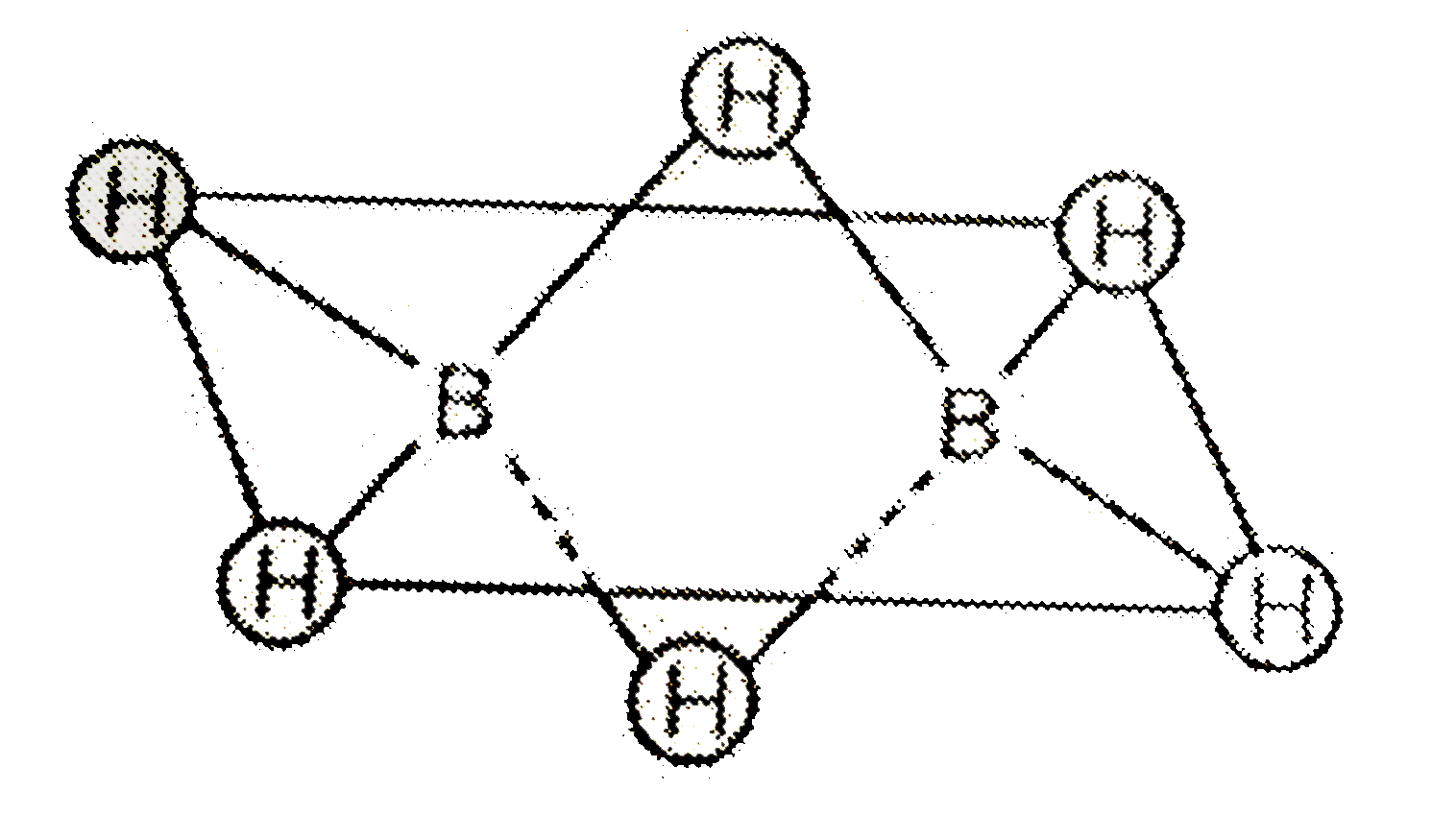Complete Solutions to Exercise of chapter P BLOCK ELEMENTS : GROUP 13,14 of Class 11 book with complete answers and questions
| Class 11 | CHEMISTRY |
| Chapter | P BLOCK ELEMENTS : GROUP 13,14 |
| BITSAT GUIDE | Exercise |
| Number Of Questions | 44 |
| Academic Year | 2023-24 |
Boron fibres are used in making
View SolutionMatch the columns and choose the correct options from the codes given below
`{:(,,"Column I",,"Column II"),(,A.,"Orthoboric acid",1.,Na_(2)B_(4)O_(7)cdot4H_(2)O),(,B.,"Borax",2.,Na_(2)B_(4)O_(7)cdot10H_(2)O),(,C.,"Kernite",3.,H_(3)BO_(3)):}`
View SolutionBoron cannot from which one of the following anions?
View SolutionHeating an aqueous solution of aluminium chloride to dryness will give
View SolutionWhen orthoboric acid `(H_(3)BO_(3))` is heated, the residue is
View SolutionBorax on heating with cobalt oxide forms a blue bead of
View SolutionBorax bead test is responded by :
View SolutionWhich of the following is a compound of ruby ?
View SolutionWhat is Tincal?
View SolutionBoric acid is used in carrom boards for smooth gliding of pawns because
View SolutionA mixture of boric acid with ethyl alcohol burns with green edged flame due to the formation of
View SolutionIn diborane, the two `H-B-H` angles are nearly
View SolutionWhich of the following statements are correct regarding diborane?
I. Two bridged hydrogen atoms and two boron atoms in one plane.

II. Out of six B-H bond, two bonnds can be described in terms of 3 centre-2 electron bonds.
III. Out of six B-H bonds, four B-H bonds can be described in terms of 3 centre-2 electron bonds.
IV. Four terminal B-H bonds are two centre electrons regular bonds.
View SolutionThe species which does not exist is
View SolutionIn `Al_(2)Cl_(6)`,
I. six Al-cl bonds are of same length and two of different length.
II. The angle Al-Cl-Al is `87^(@)`.
III. Four Al-Cl bonds are of the same length and two of different length.
IV. The angle Cl-Al-Cl is `93^(@)`Cand `110^(@)`
View SolutionConsider the following statements
I. `BBr_(3)` is stronger acid than `BF_(3)`.
II. `ppi-ppi` back bonding occurs in the haldies of aluminium.
III. Borazine is less reactive than boron.
IV. Al is unstable in air and water.
The set of incorrect statement is
View SolutionThe main factor responsible for waek acidic nature of `B-F` bonds in `BF_(3)` is
View SolutionWhich of the following statements is incorrect for aluminium chloride (`Al_(2)Cl_(6)`) ?
View Solution`AlCl_(3)` achives stability by forming a dimer. Structure of the dimer is
View SolutionWhich of the following reactions will not give the anhydrous `AlCl_(3)` ?
View SolutionThe tendency of Ge, Sn, Pb to show `+2` oxidation state, increases in the sequence
View SolutionThe order of catenation of C,Si,Ge,Sn is
View SolutionThe hybridisation of the central atom in
`SiF_(6)^(2-),[GeCl_(6)]^(2-)` and `[Sn(OH)_(6)]^(6-)` is
View SolutionGraphite conducts electricity due to the
View SolutionGraphite is a soft solid lubricant extremely difficult to melt. The reason for this anomalous behaviour is that graphite
View SolutionCarborundum is obtained when silica is heated at high temperature with
View SolutionThe miture of CO and `H_(2)` is known as
View SolutionThe miture of CO and `N_(2)` is known as
View SolutionWater gas is used as an industerial fuel because
View SolutionSilica gel is used as a/an
View Solution`Me_(2)SiCl_(2)` on hydrolysis will produce
View SolutionGive the decreasing order of covalent character of the following compounds.
a. I. `GeCl_(2)` II. `GeCl_(4)` III. `SnCl_(2)` IV. `SnCl_(4)`
V. `PbCl_(2)` VI. `PbCl_(4)`
b. I. `CH_(4)` II. `NH_(3)` III. `H_(2)O` IV. HF
c. I. HF II. HCl III. HBr IV. HI
d. I. AgI II. NaI III. CuI IV. NaCl
View SolutionThe name of the structure of silicates in which three oxygen atoms of `[SiO_(4)]^(4-)` are shared is
View SolutionAn inorganic compound X, made of two most occuring elements in the earth's crust and used in buuilding construction, when reacts with carbon, forms a diatomic molecule, which is poisonus in nature. Compound X may be
View SolutionThe shape of gaseous `SnCl_(2)` is
View SolutionMark the oxide which is amphoteric in character.
View Solution`SiH_(4)+O_(2)` mixture on bubbling through water and bubbles comming in contanct with air:
View SolutionIonisation enthalpy `(Delta_(t)H_(l) "in" kJ mol^(-1))` for the elements of group-13 follows the order
View SolutionTwo elements P and Q react seperately with highely electropositive metal to form binary compounds, which upon hydrolysis yield mixtures of boranes and silanes. P and Q respectively are
View SolutionWhich of the follownig is most stable?
View SolutionThe correct stability order for boron halides is
View SolutionAluminium metal is corroded in coastel places near to
View SolutionWhich of the following elements from both neutral as well as acidic oxides ?
View Solution`Al_(2)O_(3)` can be converted to anhydrous `AlCl_(3)` by heating
View Solution
Exercise questions and complete solutions for chapter P BLOCK ELEMENTS : GROUP 13,14 of ARIHANT CHEMISTRY (HINGLISH) of Class 11